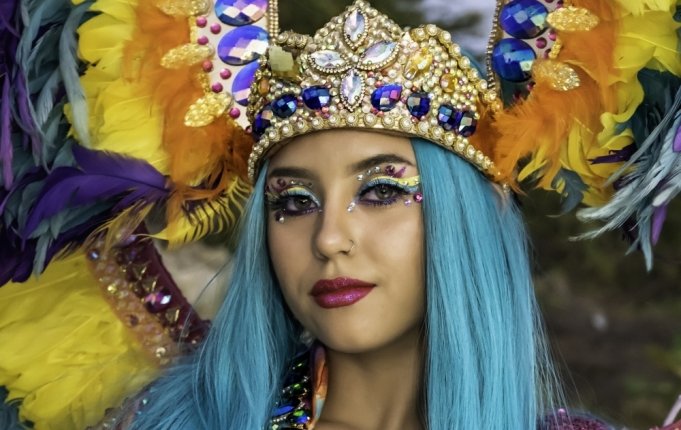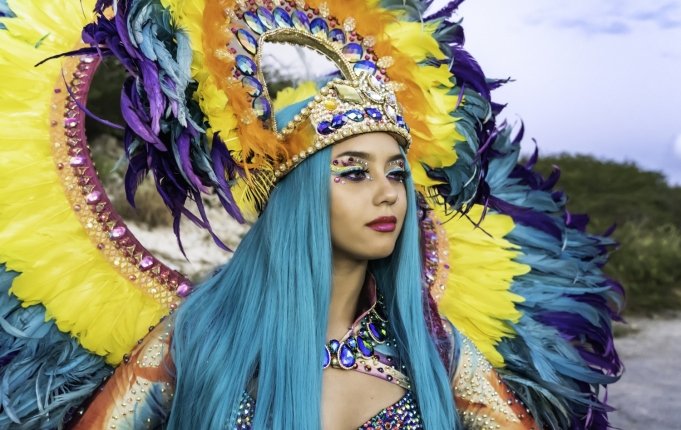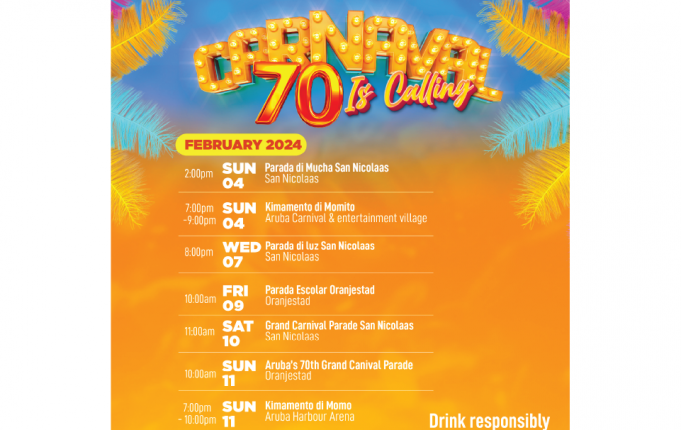Balashi Brewery is proud to be a supporter of Aruba’s 70th Carnival celebrations, with Aruba’s famed beach and festival beer, Chill, sponsoring two of the largest and most popular Carnival groups—Champagne Carnival Group and Empire Carnival Group. For those that aren’t versed in all the dynamic parades held during Aruba’s Carnival season, check out our breakdown of the exciting parades to look forward to.
The pre-Lenten over-the-top festival of Carnival is celebrated all over the world (in the U.S. it’s known as Mardi Gras), and here in Aruba, it’s been going strong for 70 years. Aruba’s Carnival has evolved tremendously over the past seven decades. Back in the 1950s, Aruba’s Carnival consisted of a few parades where roughly 120 participants shimmied to the tunes of steel bands playing Trinidadian calypsos and road marches. Today, Aruba’s Carnival is a two-month-long celebration boasting a packed schedule of Carnival queen elections, tumba and calypso music competitions, jump-ups (street parties), and an array of parades characterized by colorful floats and pumping sound trucks that fuel the thousands of party-hard spectators and paraders decked out in extravagant costumes.
The various parades form the backbone of our Carnival. There are between 10 and 18 Carnival groups each year, with each group choosing its own original theme. Each group is subdivided into various sections, the number depending on the size of the group. Every group has a “massa,” which is always the biggest section, its members’ costumes reflecting the group theme. The bigger groups will have additional specialized sections, with each section representing a unique variation on the theme according to the vision of its particular costume designer. It’s within these sections that you’ll find the most awe-inspiring costumes, impressive headpieces, towering shoulder pieces, and massive road pieces. All groups have their own live band with mammoth speakers rolling along on a tractor trailer, and most groups have their own queen and at least one painstakingly decorated float.
The Fakkel parade in Oranjestad kicks off the Carnival season with plenty of fanfare. The beauty of Fakkel is that anyone can join by participating with one of the established Carnival groups, and it’s very inexpensive to do so. Each group chooses its own Fakkel theme (which is different from the theme it uses for all other parades), and anybody participating with that group for Fakkel receives a T-shirt that reflects this theme. There are no bounds to what participants do with their tees—cutting them, twisting them, and embellishing them with lights and rhinestones—to give them their own personal touch.

Jouvert Morning kicks off the series of big parades of the Carnival season. This thrilling street party, also known as the “pajama party,” is not for the faint of heart as it starts before dawn—at 3 am!— in the oil-town of San Nicolas at the southern tip of the island. It’s an incredible sight to see as several thousand revelers, beer or rum in hand, shuffle behind the island’s most popular bands with their brass sections, drums, blaring speakers, and contagious panache.
After napping off the effects of Jouvert Morning, revelers get right back into the game and begin preparing for Oranjestad’s Lighting Parade. It’s the first chance for the members of the Carnival groups to show off the fruits of all those frenzied nights of glue-gunning rhinestones and feathers to their glorious costume designs. During this evening parade, the darkness of night serves as the perfect backdrop for the thousands of sparkling lights that participants add to their costumes. Although the parade route is less than four kilometers long, the parade lasts for several hours, with paraders taking all the time in the world to squeeze every ounce of fun from the supercharged atmosphere.

The Grand Parades are the final hurrah of the Aruban Carnival season. The first takes place in San Nicolas, and the second in Oranjestad. All the paraders bring their A- game to these daytime parades—blisters are ignored, trumpets are shined, and missing rhinestones are replaced to deliver spectacular final performances.
Island visitors are highly encouraged to attend the various Carnival celebrations and parades (see full schedule below), which play such an important role in defining Aruba’s culture. It’s the biggest party of the Aruban year, and you simply can’t miss it!
Following the Lighting Parade in Oranjestad, the sound trucks and floats make their way down to the Sunrise City in preparation for San Nicolas’ rendition of the Lighting Parade. The vibe is decidedly funkier and looser as paraders and revelers light up the streets of what is considered to be the birthplace of Aruba’s Carnival.
.png?modified=1705914709)
.png?modified=1705914752)


